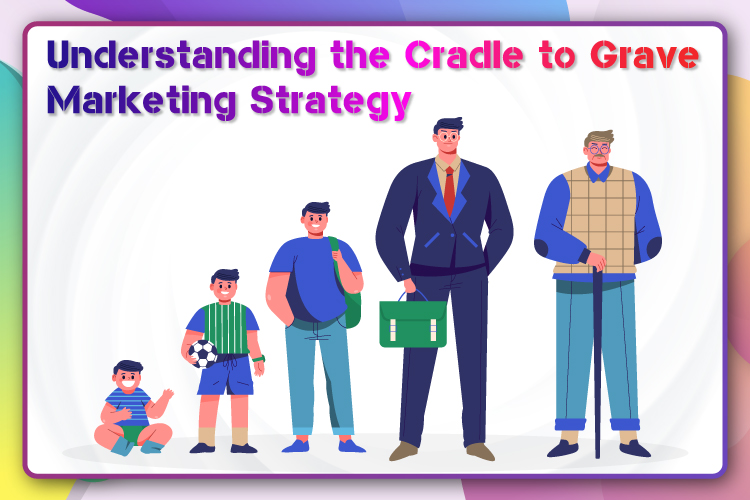
Cradle-to-Grave (C2G) marketing strategy involves the advertising of one’s products or services to customers throughout their lifespan. The aim is to create befitting products, establish two-way communications, and practice appropriate promotions to maximize sales to customers at each phase of life. This concept is based on “Lifetime Customer Value (LCV).”
Lifetime Customer Value
LCV or Lifetime Customer Value is calculated on the basis of presumptions about the total quantity and equivalent dollar value of a brand’s product that a customer could buy throughout their life. Now, in order to maximize this LCV, a brand must build a cradle-to-grave marketing strategy for its products and services. Businesses from all over the world have started adopting this concept, and as a result, a huge number of marketing and advertising companies are now focusing on marketing to children from a very young age.
Product Categories
However, not every business can benefit from C2G or cradle-to-grave marketing, but for companies with vast, varied consumer products and services, this strategy works well.
For example, food production companies or fast food restaurants can appeal to the children and have them affect the purchasing decisions of their parents. Similarly, an electronics company can make toys for toddlers, then advertise computer games to children when they reach primary school. When they become adults, the company sells fantasy sports games to them.
Data Collection
The more information you analyze, the more beneficial your cradle-to-grave strategy will be. Demographic data from reliable sources like census data is merged with individual customer purchase data accumulated at retail stores through loyalty card schemes and scanners. Marketing firms are able to get a bigger picture of their customers and their wants through the use of search engines and social media, credit card purchases, interactions with emails and promotions, internet surfing, survey responses, and much more.
Target Groups
Without the formation of target groups, cradle-to-grave strategies wouldn’t be possible. These target groups help businesses to customize their advertising strategies to engage people of different age groups. Moreover, detailed information about target audiences allows companies to develop marketing, promotions as well as the products to appeal to the target customers’ behavior and desires especially. Some typical age group descriptions are tweens, teenagers, 18-24-year-olds, etc.
Media
Brands utilize media like TV commercials and online ads to advertise their products or services to various target groups. They also use mediums, such as in-store product sampling and social media to attract customers. For example, a soft drink producing company can reach tween girls through barbie-themed commercials on a cartoon TV channel. Similarly, they can try to reach their parents through cricket-themed commercials on a news TV channel.
Restrictions
C2G marketing is not suitable for a few products and businesses. For instance, automobile manufacturing companies can’t advertise their cars to teenagers or children under 16 years of age. Likewise, financial institutions cannot advertise to someone under 18 years legally. Similarly, weight loss programs cannot target young children provided their parents and doctor allows them to take part in it.
Conclusion
From promotion to sales and distribution, everything depends on marketing. Humans have been advertised to, in some form or the other, from the very beginning. However, since the last few decades, as the competition grew, companies have started adopting cradle-to-grave marketing to make their brand familiar and relevant to their customers as early as possible. The idea is to market the products and services to children so that eventually they become the company’s loyal customers. Because let’s face it, when it comes to shopping with children, they have the power of purchase right at their fingertips. After all, who likes to say no to that cute little human? So today, C2G marketing is the key to building brand loyalty.
